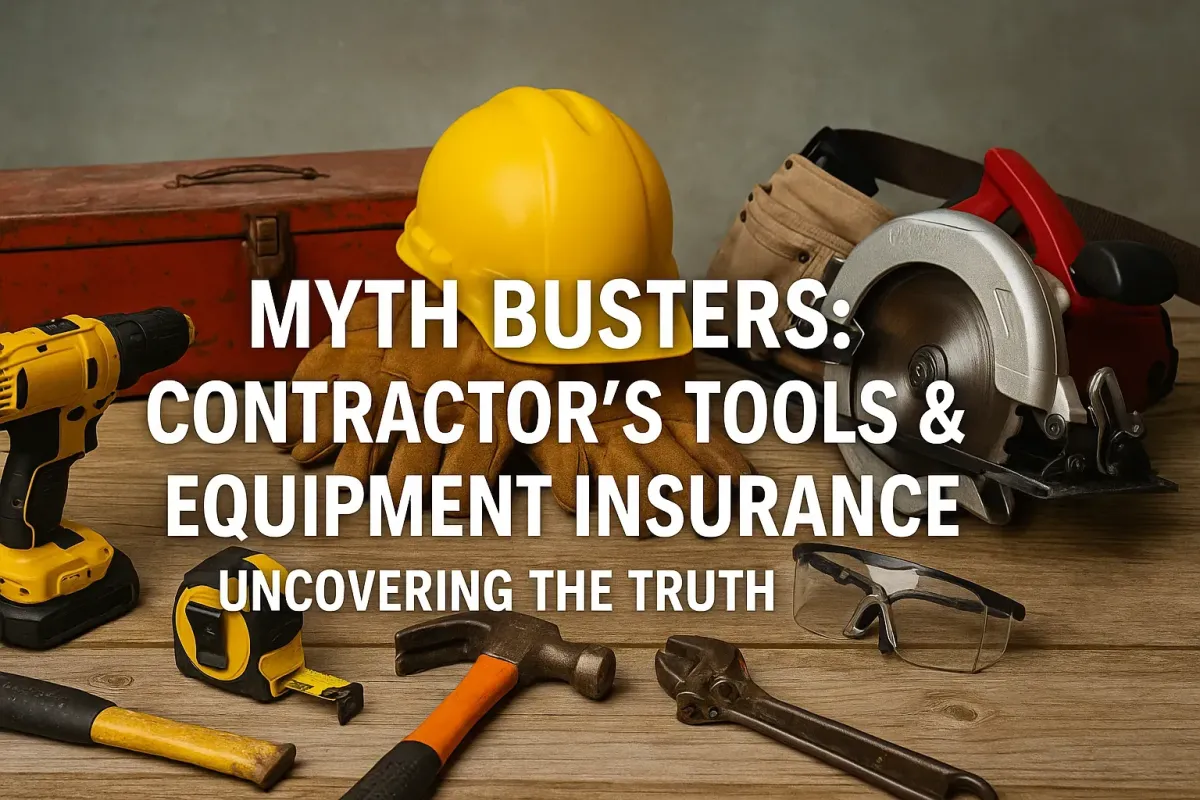
Contractor’s Tools & Equipment Insurance Myths Busted – BudgetBonds
Myth Busters: Contractor's Tools & Equipment Insurance – Exposing the Real Truth
Contractors dedicate time, money, and expertise into building a business—much of it invested in the tools and equipment that keep projects running. From high-powered drills and precision saws to generators and heavy-duty machinery, these items aren’t just assets—they’re the lifeblood of every contractor’s operation. Imagine showing up to a job only to discover your gear has been stolen, damaged, or lost. The financial setback, job delays, and hit to your reputation can be staggering.
That’s where contractor’s tools and equipment insurance becomes essential. Yet, persistent myths leave many business owners underinsured or even completely exposed. In this comprehensive guide, we’ll debunk the most common misconceptions, explain what real coverage looks like, and empower you to secure your business’s future.
Myth #1: “My General Liability Insurance Covers My Tools”
The Real Role of General Liability vs. Tools & Equipment Insurance
One of the most widespread misunderstandings among contractors is believing that general liability (GL) insurance will pay for damaged or stolen tools. In reality, general liability is designed for third-party claims—it protects you if you accidentally harm someone else or their property on a job site. It’s critical protection, but it won’t help if your own equipment is lost or stolen.
General Liability Insurance Covers:
A client who trips over your extension cord and breaks an ankle.
You accidentally shatter a homeowner’s window during demo work.
What It Does NOT Cover:
Your table saw stolen from a construction site.
Water damage to your power tools during a rainstorm.
Vandalism or fire that destroys your compressors or scaffolding.
Why This Matters:
If you’re relying only on general liability, you’re leaving your business vulnerable. Replacing even a few key pieces of equipment out-of-pocket can cost thousands—and could halt your business altogether.
Want to see what full coverage looks like? Explore our Services page for a breakdown of the best options for contractors.
Myth #2: “My Tools Are Always Covered Off-Site, Even in My Truck”
Understanding Off-Premises Coverage and Its Limits
A lot of contractors believe that if they have a tools and equipment policy, it automatically covers theft or loss no matter where the tools are. This isn’t always the case! Most contractor’s tools and equipment policies include “off-premises” or “in transit” protection, but there are often crucial restrictions.
Common Policy Details:
Tools are usually covered at any job site, in storage, or while being transported between sites.
Theft from a vehicle may be covered, but only if the vehicle was locked and there are signs of forced entry.
Many policies exclude losses if tools are left unattended, unsecured, or in public places overnight.
Real-World Example:
A plumber leaves thousands in tools in his unlocked van overnight. The next morning, everything is gone. His insurance company denies the claim because the vehicle wasn’t locked—a clear violation of policy terms.
Pro Tip:
Protect your assets by locking all vehicles, using heavy-duty locks for storage boxes, and keeping sites secure after hours. Maintaining a photo inventory and receipts speeds up any claim process.
For more on safeguarding your business, see our expert tips on the About page or contact us directly.
Myth #3: “All Tools & Equipment Policies Are Alike”
The Reality: Coverage Types and Customization Matter
Not all tools and equipment insurance is created equal. Some contractors buy basic coverage only to find out too late that there were big gaps in their protection.
Key Differences to Understand:
Inland Marine or “Floater” Coverage: Moves with your tools wherever your job takes you, versus standard property insurance which only protects items at your main address.
Named Perils vs. All-Risk: “Named perils” only covers losses specifically listed (like fire or theft). “All-risk” (best for most contractors) covers everything except what’s specifically excluded.
Scheduled vs. Unscheduled: Scheduled policies require you to list each tool/item. Unscheduled (often with lower limits) covers categories of tools—great for hand tools or smaller items.
Coverage Limits and Deductibles:
Set your policy limits to reflect the true replacement cost of all your equipment, not just a portion. Don’t forget to review your deductible—the higher it is, the lower your premiums, but the more you’ll pay if you file a claim.
Actionable Tip:
Bundle your contractor’s tools policy with other key coverages like general liability, commercial auto, or builder’s risk insurance. Bundling can simplify your insurance and often saves money.
Need guidance? Check out our Services for customizable packages built for contractors of all sizes.
Myth #4: “I Only Need Insurance for My Newest Equipment”
Don’t Ignore the Value of Used or Older Tools
Another costly myth is thinking only brand-new equipment is worth insuring. In reality, your older tools are just as essential—and expensive—to replace if stolen or damaged.
Depreciation Explained:
Actual Cash Value (ACV): Payout is reduced for wear and tear; you may not get enough to buy new replacements.
Replacement Cost Value (RCV): Covers the cost to replace items with brand-new equivalents, regardless of age (highly recommended for contractors).
Why Insure Used Gear?
Losing an older but reliable tool can stall your workflow just as badly as losing a new one. Insurance makes sure you stay in business, no matter what.
Recordkeeping Tip:
Keep detailed records, photos, and receipts for all your tools—old and new. This documentation is invaluable if you need to make a claim.
Myth #5: “Insurance Premiums Are Too High for Small Contractors”
The High Price of Skipping Insurance
It’s common to think insurance is just an extra cost. But not having tools and equipment insurance can be catastrophic if you face theft, fire, or vandalism. Replacing just a few key tools could cost more than several years of premiums.
What Does Insurance Really Cost?
Premiums are often affordable for small contractors, especially when bundling policies.
Compare different providers and ask about discounts for safety practices, security systems, and clean claims history.
Real-World Example:
A small HVAC contractor suffered a break-in and lost $10,000 in tools. Without insurance, they couldn’t accept new jobs and nearly went out of business. A modest monthly premium would have kept them afloat and paid for full replacement.
Extra Layer: Security Beyond Insurance
Install jobsite cameras, alarms, and motion-activated lights.
Train employees on daily equipment lockup.
Mark tools with your company logo and register serial numbers with local police if possible.
Bonus Tip:
Keep your tool inventory list updated in a cloud-based document, so you can access it anytime, anywhere.
Final Word: Don’t Let Myths Endanger Your Business
General liability alone does not cover your tools. You need specialized contractor’s tools and equipment insurance to keep your business moving forward, protect cash flow, and preserve your reputation.
Know your policy details—limits, deductibles, and whether you have ACV or RCV coverage.
Insure everything essential, from your newest to your oldest, most reliable tools.
Pair great insurance with smart security practices for the best defense.
Ready to protect your business and livelihood?
Visit our Services page to learn more.
Meet our team and see our commitment on the About page.
Request a free, custom quote or policy review via Contact Us.
Don’t wait for disaster—review and upgrade your protection today!

